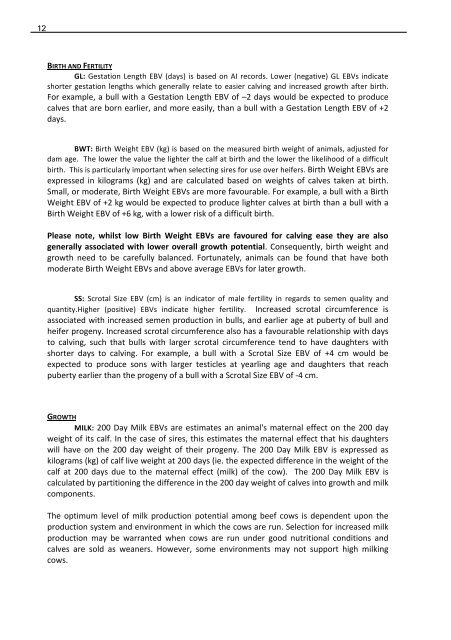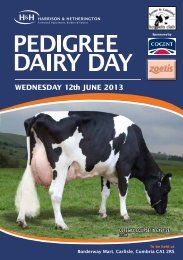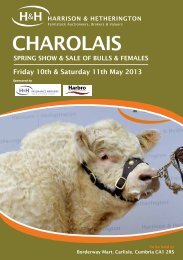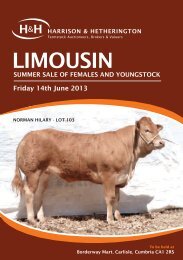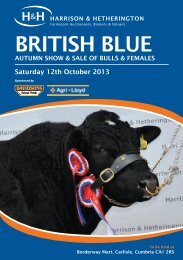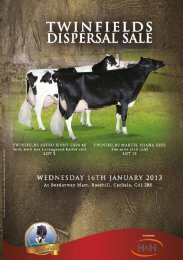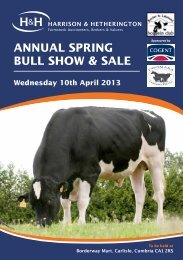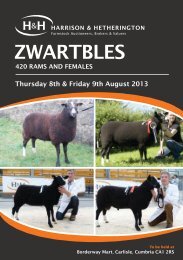Create successful ePaper yourself
Turn your PDF publications into a flip-book with our unique Google optimized e-Paper software.
12BIRTH AND FERTILITYGL: Gestation Length EBV (days) is based on AI records. Lower (negative) GL EBVs indicateshorter gestation lengths which generally relate to easier calving and increased growth after birth.For example, a bull with a Gestation Length EBV of –2 days would be expected to producecalves that are born earlier, and more easily, than a bull with a Gestation Length EBV of +2days.BWT: Birth Weight EBV (kg) is based on the measured birth weight of animals, adjusted fordam age. The lower the value the lighter the calf at birth and the lower the likelihood of a difficultbirth. This is particularly important when selecting sires for use over heifers. Birth Weight EBVs areexpressed in kilograms (kg) and are calculated based on weights of calves taken at birth.Small, or moderate, Birth Weight EBVs are more favourable. For example, a bull with a BirthWeight EBV of +2 kg would be expected to produce lighter calves at birth than a bull with aBirth Weight EBV of +6 kg, with a lower risk of a difficult birth.Please note, whilst low Birth Weight EBVs are favoured for calving ease they are alsogenerally associated with lower overall growth potential. Consequently, birth weight andgrowth need to be carefully balanced. Fortunately, animals can be found that have bothmoderate Birth Weight EBVs and above average EBVs for later growth.SS: Scrotal Size EBV (cm) is an indicator of male fertility in regards to semen quality andquantity.Higher (positive) EBVs indicate higher fertility. Increased scrotal circumference isassociated with increased semen production in bulls, and earlier age at puberty of bull andheifer progeny. Increased scrotal circumference also has a favourable relationship with daysto calving, such that bulls with larger scrotal circumference tend to have daughters withshorter days to calving. For example, a bull with a Scrotal Size EBV of +4 cm would beexpected to produce sons with larger testicles at yearling age and daughters that reachpuberty earlier than the progeny of a bull with a Scrotal Size EBV of -‐4 cm.GROWTHMILK: 200 Day Milk EBVs are estimates an animal's maternal effect on the 200 dayweight of its calf. In the case of sires, this estimates the maternal effect that his daughterswill have on the 200 day weight of their progeny. The 200 Day Milk EBV is expressed askilograms (kg) of calf live weight at 200 days (ie. the expected difference in the weight of thecalf at 200 days due to the maternal effect (milk) of the cow). The 200 Day Milk EBV iscalculated by partitioning the difference in the 200 day weight of calves into growth and milkcomponents.The optimum level of milk production potential among beef cows is dependent upon theproduction system and environment in which the cows are run. Selection for increased milkproduction may be warranted when cows are run under good nutritional conditions andcalves are sold as weaners. However, some environments may not support high milkingcows.


